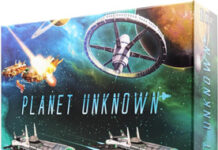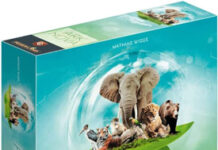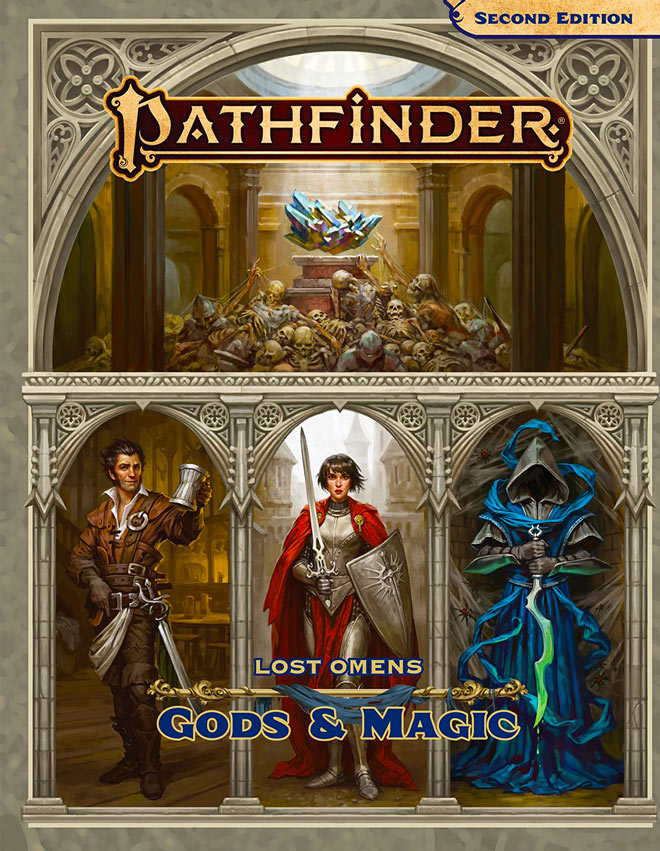
What is Pathfinder?
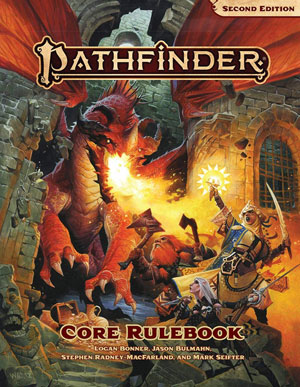
Pathfinder is a fantasy Role-Playing Game from Paizo Publishing. The Pathfinder RPG was first published in 2009. Pathfinder is somewhat based on the rules of Dungeons and Dragons (D&D) version 3.5 via D&D’s Open Game License.
Pathfinder tweaked D&D’s 3.5 rules a bit. Pathfinder introduced new character classes, like the Alchemist class. Spells, skills and fighting were also tweaked to the delight of many fans. In 2011, Pathfinder was outselling Dungeons and Dragons. And in August 2019, Paizo released Pathfinder Second Edition.
What is Pathfinder – Lost Omens Gods & Magic?
Pathfinder – Lost Omens Gods & Magic (Second Edition) – is a new 8.5″ x 11″ hardcover book that is being released in early 2020 by Paizo publishing. The book is in full color, and is 136 pages long. This book expands on content from the Core Rulebook.
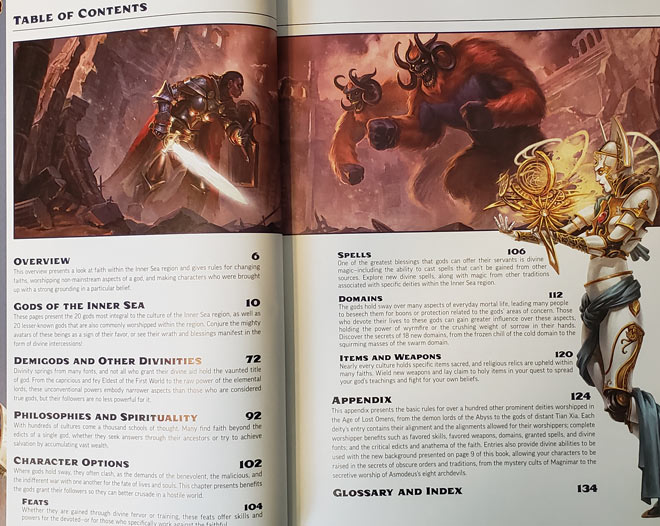
This book presents an in-depth look at the gods presented in Chapter 8 of the Pathfinder Core Rulebook. This includes alternate domains and divine intercessions each god grants.
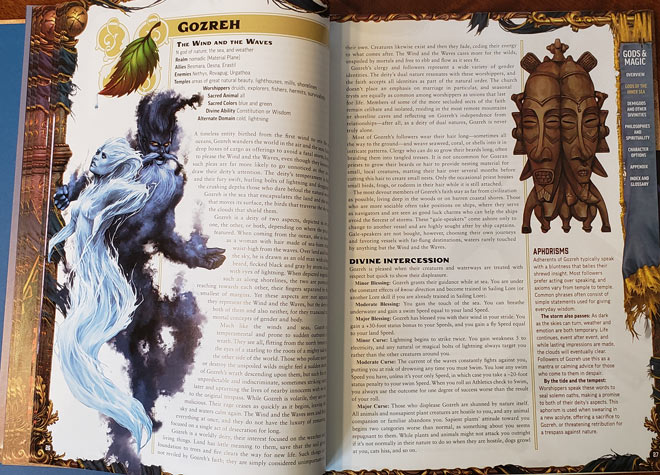
We hope to give you a little taste of what you will find inside this beauty. Forty early pages in the book are dedicated to the 20 primary deities – Gods of the Inner Sea Region. Two pages are dedicated to each of these Primary deities (along with artwork of god). These Gods are:
- Abadar – Master of the First Vault
- Asmodeus – The Prince of Darkness
- Calistra – The Savored Sting
- Cayden Cailean – The Accidental God
- Desna – The Song of the Spheres
- Erastil – Old Deadeye
- Gorum – Our Lord in Iron
- Gozreh – The Wind and the Waves
- Iomedae – The Inheritor
- Irori – Master of Masters
- Lamashtu – Mother of Monsters
- Nethys – The All-Seeing Eye
- Norgorber – Blackfingers, Father Skinsaw, The Gray Master, Reaper of Reputation
- Pharasma – Lady of Graves
- Rovagug – The Rough Beast
- Sarenrae – The Dawnflower
- Shelyn – The Eternal Rose
- Torag – Father of Creation
- Urgathoa – The Pallid Princess
- Zon-Kuthon – The Midnight Lord
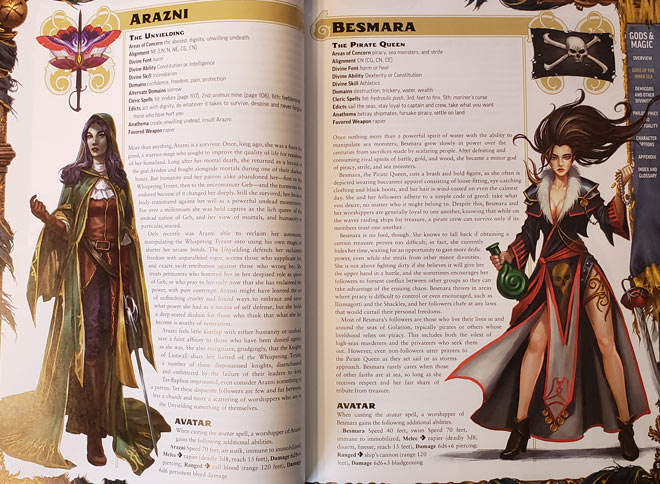
The book then looks at 20 additional deities who are also important. Statistics and mechanical information is provided to play a champion, cleric, or worshipper of that deity. One page is dedicated to each of these deities (along with artwork of each god). These deities are:
- Achaekek – He Who Walks in Blood
- Alseta – The Welcomer
- Arazni – The Unyielding
- Besmara – The Pirate Queen
- Brigh – The Whisper in Bronze
- Casandalee – The Iron Goddess
- Chaldira – The Calamitous Turn
- Ghlaunder – The Gossamer King
- Grandmother Spider – The Weaver
- Groetus – God of the End Times
- Gruhastha – The Keeper
- Hei Feng – Duke of Thunder
- Kazutal – Mother Jaguar
- Kurgess – The Strong Man
- Milani – The Everbloom
- Nivi Rhombodazzle – The Grey Polychrome
- Nocticula – The Redeemer Queen
- Sivanah – The Seventh Veil
- Shizuru – The Empress of Heaven
- Tsukiyo – Prince of the Moon
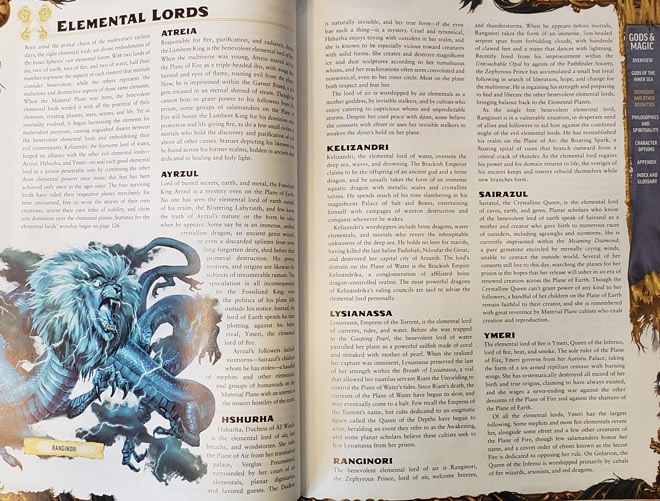
The book then spends 20 pages looking at Demigods and other Divinities. These are demigods whose followers can be found in the Inner Sea Region. These include:
- Archdevils
- Queen of the Night
- Demon Lords
- The Eldest
- Elemental Lords
- Empyreal Lords
- The Horsemen
- Monitor Demigods
- Outer Gods & Great Old Ones
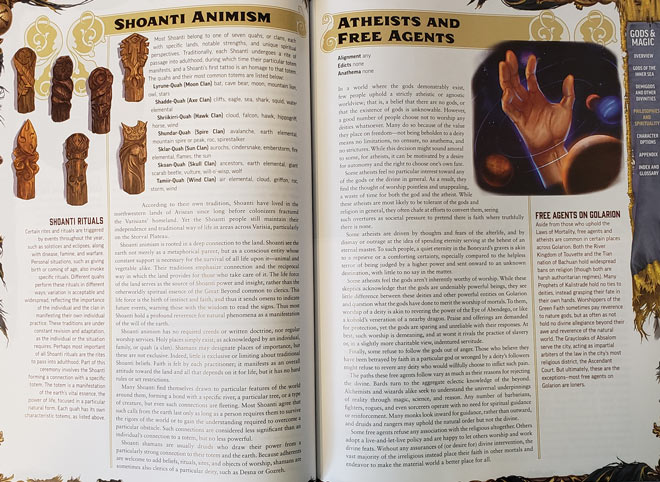
The Next Chapter of the book looks at Philosophies and Spirituality practices of the Inner Sea Region. This Chapter has sections for:
- Pantheons
- Esoteric Order of the Palatine Eye
- God Calling
- Green Faith
- Laws of Mortality
- Prophecies of Kalistrade
- Sangpotshi
- Shoanti Animism
- Atheists and Free Agents
The last chapter of the book focuses on Character Options including:
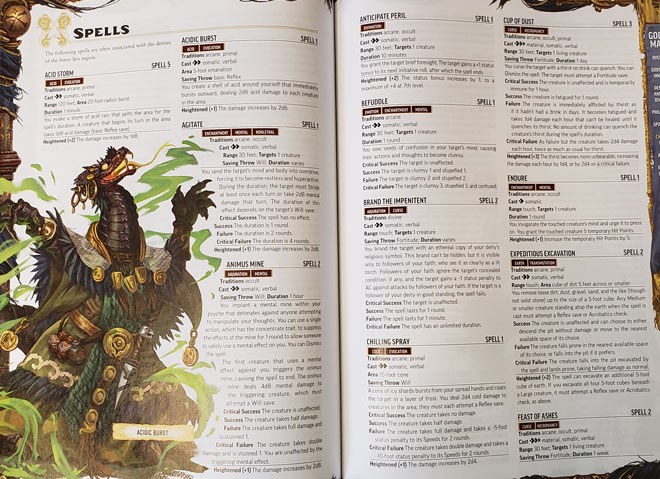
- Feats – General feats, Skill feats and Specialized class feats
- Spells – Some are new additions to the Divine Spell List. Some can be cast by clerics, sorcerers, bards, druids, wizards and other characters with access to spellcasting.
- Domains and Domain Spells – New Domains as well as basic and advanced domain spells
- Items and Weapons – Rules for many new items – bothe magical and non-magical.
- Appendix – Tables and Charts that provide basic details required for a worshipper
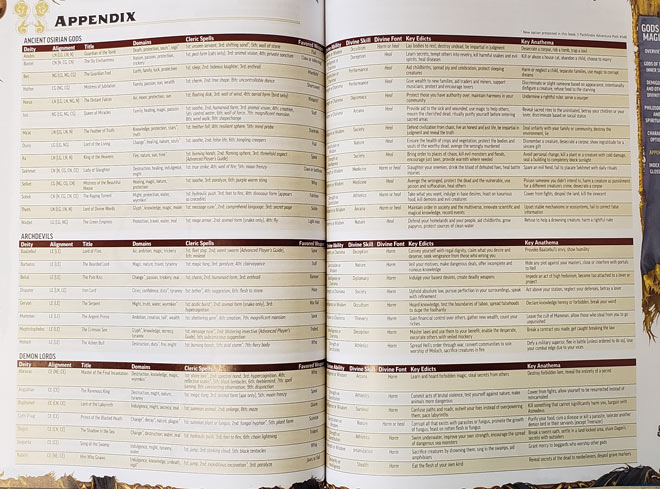
Final Thoughts
Let me get this out of the way first – This book is not essential. You do not need it to enjoy Pathfinder. The Core Rulebook is all players need to play the game. But it is always fun to learn new lore, and add more spells, items & weapons to the game.
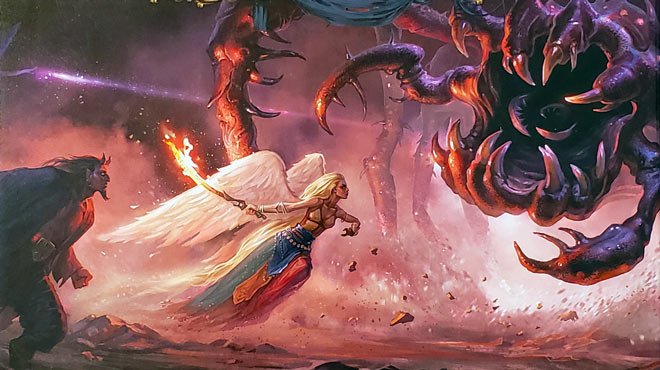
The book is beautifully done, well written, and is of very high quality. The artwork is fantastic. There is a great deal of lore on Gods and Demigods, and this makes it a very fun read. There also is a lot of rules content in here that can be used by all characters as well. This is an easy recommendation for Pathfinder players.

